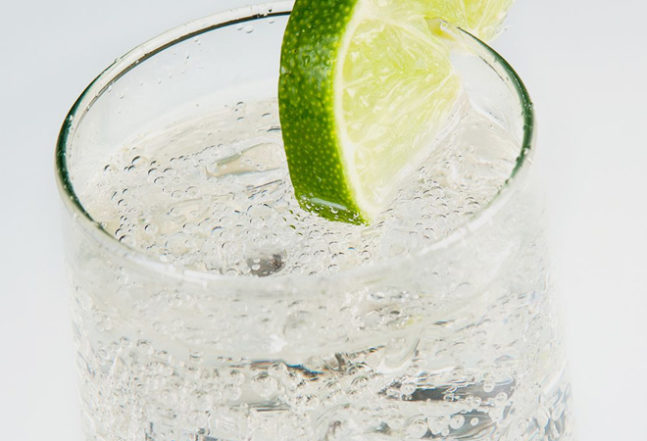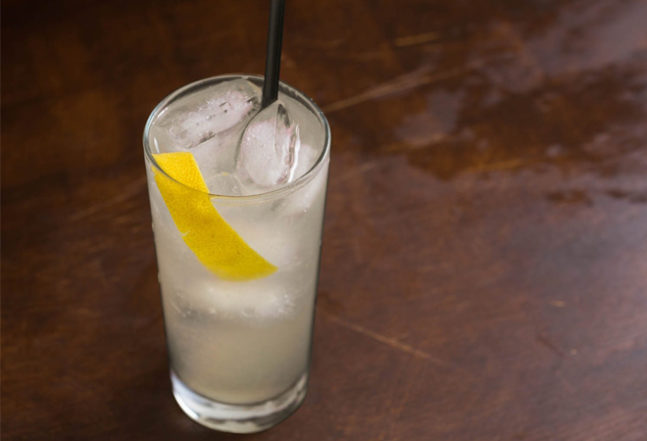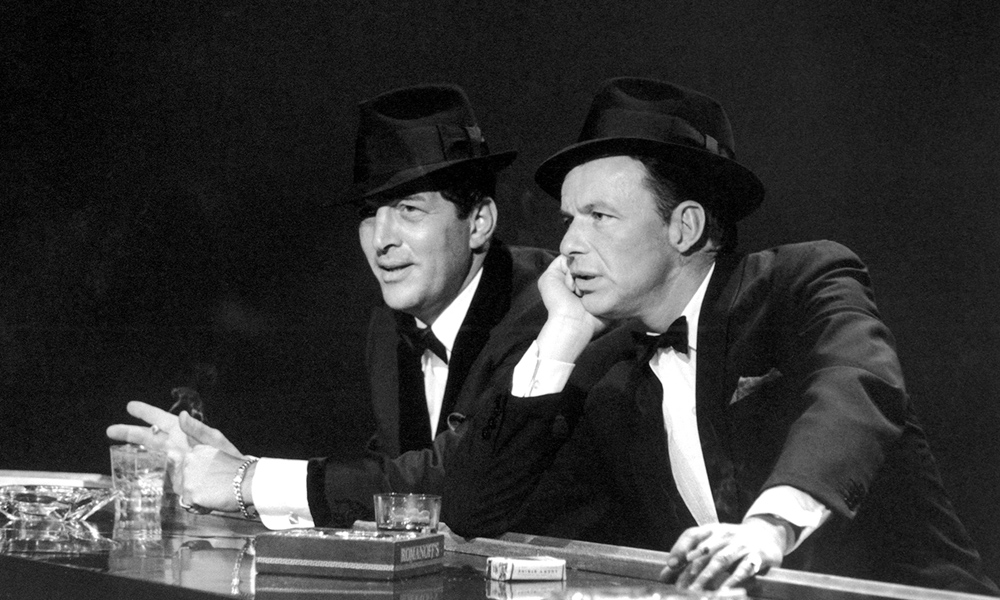If you’re into the experimental cocktail scene, no one’s going to stop you. Go ahead and drink your Ron Swanson disapproved drinks. But when we’re bartending or patronizing a cocktail bar, we want the tried and true recipes. The Manhattans, Old Fashioneds, and Sazeracs (none of which will appear on this list, because they’re the ones everyone already knows). We want the stuff our grandfathers were drinking.

Gin Rickey
Gin is on the cusp of having a moment similar to bourbon and we’re confident that the Gin Rickey is going to be helping drive it. It’s old, it’s straightforward, it’s delicious, which are the three hallmarks of a successful cocktail. The drink is named for Colonel Joe Rickey, the man who popularized the Gin Rickey in the first place. He’s the one who put the recipe together and had his bartender at the Shoomaker in Washington D.C. (which he owned) mix it up, though it’s highly likely the first Rickey was made with the colonel’s own rye whiskey, not the stereotypical gin. And given our enthusiasm for rye whiskey, we’ll be drinking both fairly consistently. Recipe

Lynchburg Lemonade
For most of our cocktail recommendations, we usually say you can switch out liquor types to suit your own tastes, but, at least the first time you make a Lynchburg Lemonade, you have to do it with Jack Daniel’s. It’s more respectful to the history of the drink, considering this is a recipe made especially to show off the strengths of the whiskey. Though, if one story is to be believed, the Lynchburg Lemonade is fairly young, only coming about in 1980. Jack Daniel also abused the guy who invented it, pretty much stealing a successful cocktail from its inventor and never giving him any kind of compensation. Not even a Thank You note. So maybe, if you’re going to mix one of these up, do it in the name of inventor Tony Mason, not Jack Daniel. And steal the whiskey if you can. It only seems fair. Recipe

Sidecar
This entry gets you two recipes, as you can’t talk about the Sidecar without at least mentioning the Brandy Crusta. The Brandy Crusta was first mixed in 1862, or around then, but definitely in New Orleans. It’s a relic from when the word “cocktail” had a set definition, where a drink couldn’t be considered a cocktail unless it followed the strict “spirits, water, sugar, bitters” recipe. Kind of like how Germans can’t call something beer if it deviates from the barley, water, hops standard. People drank the Brandy Crusta for nearly a hundred years, until 1948, when David Embury’s book cut the recipe down to the bones and created the Sidecar. Recipe

Aviation
The Aviation used to have an almost legendary status in bars, mostly because its ingredients were so difficult to find. Today, you could probably find maraschino liqueur and creme de violette in most well-stocked cocktail bars, but in 1930, when the Aviation was invented, these were two exceedingly rare liqueurs. The drink enjoyed a resurgence in the early aughts, but it’s fallen off again, as people can’t seem to agree whether or not this drink tastes good. Some industry professionals are calling for Last Rites on this one, where other people love how it showcases the versatility of gin. It’s almost as if there isn’t an objective answer and you have to find out for yourself. Recipe

Tom Collins
Tom Collins is not a real person, which, surprisingly, was always the point of bringing up Tom Collins. Apparently this cocktail is named after The Great Tom Collins Hoax of 1874, when people would say a guy named Tom Collins had been bad mouthing someone, at which point the offended would go off looking to confront the fictional offender. From there, a bartender made a drink named for the hoax as a marketing gimmick, and now we’ve had nearly a hundred and fifty years of a delicious gin cocktail. All because people thought it was hilarious to make their friends fight fictional people. Recipe

White Russian
Of everything on this list, this is the one you’ve definitely heard of thanks to how many of you have watched The Big Lebowski. We’d go so far as to say you’ve already gotten drunk on these during a Lebowski marathon, which is also when the idea that the Coen brothers invented this drink got stuck in your head. While that’s a much better story, in reality, the White Russian came about when someone dropped some cream into a Black Russian, a cocktail enjoyed since the late 1940s. You could make an argument that the drink is named for the White faction of the Russian Revolution, but it’s far more likely that someone decided a white drink with vodka in it shouldn’t be thought about too hard. Recipe

Whiskey Smash
The earliest mention of the whiskey smash in a form we’d recognize is 1888, when Harry Johnson put together a few recipes to show off the drinking tradition of the American South. Which it totally does, seeing as how a smash is a modified julep and the julep is the quintessential drink below the Mason-Dixon. In fact, we’d say most people are thinking of a whiskey smash when they talk about the traditional mint julep. We know we’ve made the mistake more than once. Recipe

Gimlet
The Gimlet was first mixed on British ships in the 19th century, most likely by Sir Thomas Desmond Gimlette. If you remember your grade school history about preventing scurvy, you can add a more adult twist on it. Turns out they didn’t just chow down on lemon and lime wedges. Sometimes they got drunk on their medicine. The Gimlet became so widespread, we get two different cultural mainstays from it. The first is “grog,” as a simple way to describe an alcoholic mix. The second is “Limeys,” the vaguely pejorative way to talk about the British. Apparently British sailors really enjoyed the Gimlet. Recipe




